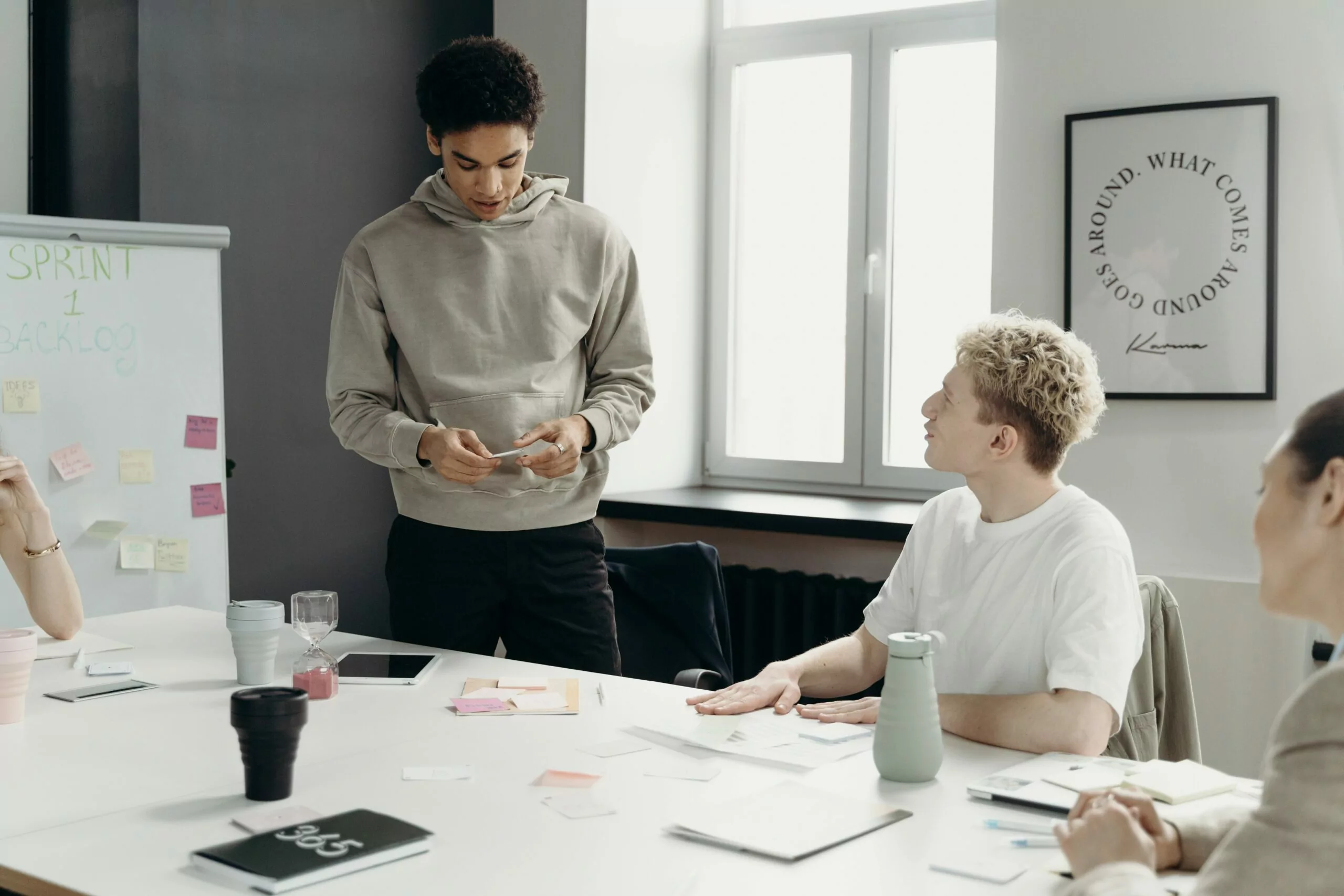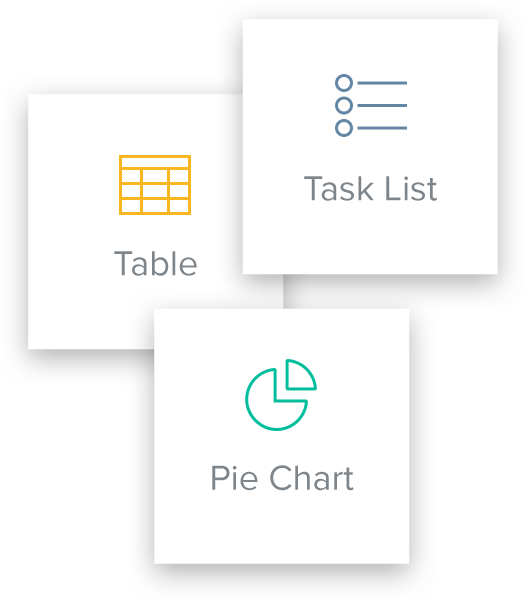Product Lifecycle: 5 Proven Strategies for Navigating Every Stage
Updated by Xtensio
Introduction
If you’re reading this, chances are you’re deeply invested in the success of a product—be it your own creation or something you’re tasked to manage.
Understanding the Product Lifecycle is like having a roadmap for your product’s journey. Stick around, and I’ll walk you through how to navigate each stage like a pro.
Why Understanding the Product Lifecycle is Crucial
Imagine going on a road trip without a map. You might still reach your destination, but you’ll likely make a lot of wrong turns along the way. The Product Lifecycle is your map, guiding you through each stage of your product’s life, from its birth to its retirement party.

What This Article Will Cover
We’ll dive deep into each stage of the Product Lifecycle, explore strategies for success, and look at real-world examples. By the end, you’ll be a Product Lifecycle guru, ready to take your product to new heights.
Table of Contents
The Concept of Product Lifecycle
Definition and Importance
The Product Lifecycle is a framework that outlines the stages a product goes through from conception to withdrawal from the market. It’s like the life story of your product, complete with its ups and downs. Understanding this lifecycle helps you make informed decisions, allocate resources wisely, and maximize profitability.
The Four Stages: An Overview
Picture your product’s life as a four-act play: Introduction, Growth, Maturity, and Decline. Each act has its own set of challenges and opportunities. Knowing what to expect helps you prepare and adapt, ensuring your product’s story has a happy ending.
The Birth of a Product: Introduction Stage
Characteristics and Challenges
The Introduction stage is like the baby phase of your product. It’s new, exciting, but also vulnerable. Sales are usually low, costs are high, and the market is often skeptical. It’s like taking your first steps; you’re bound to stumble a bit.
Strategies for a Successful Launch
- Target Early Adopters: These are the folks who love trying new things. They can help spread the word and give your product the initial push it needs.
- Introductory Pricing: Consider offering special pricing or promotions to attract those first crucial customers.
- Invest in Quality Marketing: A strong marketing campaign can generate buzz and drive interest in your product.
Real-life Examples of Product Introductions Done Right
Remember when the first iPhone was launched? Apple targeted tech enthusiasts and invested heavily in marketing. The result? A revolution in the smartphone industry.
Scaling New Heights: The Growth Stage
Signs Your Product is Growing
So your product has survived its infancy and is now in its “teenage” years. Sales are picking up, and you’re starting to turn a profit. But beware, this is also when competition usually heats up.
How to Capitalize on the Momentum
- Expand Your Market: Consider entering new markets or targeting different customer segments.
- Improve the Product: Use customer feedback to make improvements and add new features.
- Invest in Customer Retention: It’s easier and cheaper to keep existing customers than to acquire new ones.
Pitfalls to Avoid During Growth
- Overexpansion: Growing too fast can strain your resources and lead to quality issues.
- Ignoring Customer Feedback: Your customers can offer valuable insights. Ignore them at your peril.
The Peak of Success: Maturity Stage
Identifying When Your Product Reaches Maturity
Your product is now an adult, enjoying its peak earning years. Sales growth may start to slow, but you’re still doing well. This is often the longest stage in the Product Lifecycle.
Strategies to Sustain Market Share
- Diversify: Consider introducing complementary products to keep customers engaged.
- Optimize Costs: Look for ways to reduce production and operational costs to improve profitability.
- Customer Loyalty Programs: Reward your long-term customers to encourage repeat business.
Innovations to Keep Your Product Relevant
Remember how Coca-Cola introduced Diet Coke and Cherry Coke? Innovations like these can breathe new life into a mature product.
The Inevitable Decline: The Decline Stage
Recognizing the Signs of Decline
All good things must come to an end, and products are no exception. Sales will start to drop, and profits will decline. It’s like your product is entering its retirement years.
Strategies for a Graceful Exit
- Discontinue Low-performing Variants: Focus on the most profitable aspects of your product.
- Look for Acquisition Opportunities: Another company might be interested in buying your product.
- Liquidation: As a last resort, you can liquidate remaining inventory to recoup some costs.
Case Studies of Products That Successfully Pivoted
Remember how Nintendo started as a playing card company before pivoting to video games? Sometimes the end of one journey can be the beginning of another.
Transitioning Between Stages
The Importance of Timing
Knowing when to transition from one stage to another is crucial. It’s like knowing when to shift gears while driving; get it right, and you’ll have a smooth ride.
Tips for Smooth Transitions
- Regularly Review KPIs: Keep an eye on key performance indicators to know when it’s time to transition.
- Involve Your Team: Make sure everyone is on the same page about what needs to be done.

How to Know When to Move On
Listen to your customers and keep an eye on market trends. If you start noticing a consistent decline in sales or increased negative feedback, it might be time to move on.
The Role of Marketing in Each Stage
Marketing Strategies for Introduction
In the Introduction stage, focus on building brand awareness. Use social media, influencer partnerships, and PR stunts to get the word out.
Scaling Your Marketing Efforts in Growth
Now’s the time to double down on what’s working. Invest in advertising and consider partnerships to expand your reach.
Maintaining Brand Loyalty During Maturity
Your customers are your best asset at this stage. Use email marketing and loyalty programs to keep them engaged.
Rebranding or Exiting in the Decline Stage
Sometimes a fresh coat of paint can make an old house look new. Consider a rebrand to rejuvenate your product, or if that fails, prepare for a graceful exit.
Financial Planning Across the Lifecycle
Budgeting for Each Stage
Your financial needs will vary at each stage. In the Introduction stage, you’ll likely be operating at a loss, so plan accordingly.
ROI Expectations and Realities
Your return on investment (ROI) will fluctuate throughout the Product Lifecycle. Be prepared for this and adjust your expectations as needed.
Case Studies on Financial Management
Companies like Amazon and Tesla initially operated at a loss but had long-term financial strategies that paid off. Learn from them.
The Role of Customer Feedback
Importance of Customer Insights
Your customers are like the co-pilots on your journey. They can offer valuable insights that can help you navigate the Product Lifecycle more effectively.
How to Collect and Utilize Feedback
Use surveys, social media, and direct interviews to gather feedback. But remember, collecting feedback is only useful if you actually act on it.
Tools for Customer Feedback Analysis
There are plenty of tools out there that can help you analyze customer feedback. Platforms like SurveyMonkey or Trustpilot can be invaluable.
The Impact of External Factors
Market Trends and Consumer Behavior
The market is like the weather; it’s constantly changing. Stay updated on market trends and be prepared to adapt.
Economic Factors
Economic downturns or booms can have a significant impact on your product’s success. Always have a contingency plan.
Technological Advances
New technologies can either be an opportunity or a threat. Stay updated on the latest tech trends related to your industry.
The Role of Team and Leadership
Team Dynamics at Each Stage
Your team is like your pit crew in a race; you can’t win without them. Understand that their roles and needs will change at each stage of the Product Lifecycle.
Leadership Styles That Work Best
Different stages may require different leadership styles. Be adaptable and willing to change your approach as needed.
Real-Life Examples of Effective Leadership
Steve Jobs, Elon Musk, and other successful leaders adapted their leadership styles to meet the needs of their products and companies at each stage.
Product Lifecycle in Different Industries
Tech Industry
The tech industry is fast-paced, with products often having shorter lifecycles. Adaptability is key.
Food and Beverage
Trends like health consciousness or sustainability can significantly impact the Product Lifecycle in this industry.
Fashion
The fashion industry is fickle, with trends coming and going rapidly. Agility and the ability to predict trends are crucial.
Global Considerations in Product Lifecycle
Adapting to Different Markets
What works in one country might not work in another. Be prepared to adapt your product and strategies for different markets.
Case Studies of Global Success and Failures
Brands like Coca-Cola have successfully adapted their products for global markets, while others like eBay have failed. Learn from both.
The Role of Data and Analytics
Key Metrics to Monitor
Metrics like customer acquisition cost (CAC), customer lifetime value (CLV), and net promoter score (NPS) can provide valuable insights.
Tools for Data Analysis
Google Analytics, Tableau, and other data analysis tools can help you make sense of the numbers.
How Data Drives Decisions
Data is like the compass that helps you navigate the Product Lifecycle. Use it to validate your decisions and adjust your course as needed.
Sustainability and the Product Lifecycle
The Importance of Sustainable Practices
Sustainability isn’t just a buzzword; it’s a necessity. Consumers are increasingly considering sustainability in their purchasing decisions.
How Sustainability Impacts the Lifecycle
Sustainable practices can extend your product’s lifecycle and improve its public image.
Brands That Have Successfully Integrated Sustainability
Companies like Patagonia and Tesla have successfully incorporated sustainability into their Product Lifecycle, benefiting both the planet and their bottom line.
The Future of Product Lifecycle Management
Upcoming Trends
From AI to remote work, various trends will impact how we manage the Product Lifecycle in the future.
The Impact of AI and Machine Learning
AI can analyze data faster and more accurately than humans, providing valuable insights that can help extend your product’s lifecycle.
What to Expect in the Next Decade
The only constant is change. Be prepared to adapt and evolve your Product Lifecycle strategies as new trends and technologies emerge.
Frequently Asked Questions
What is the Product Lifecycle?
The Product Lifecycle is a framework that outlines the stages a product goes through from its inception to its decline or discontinuation. The typical stages include Introduction, Growth, Maturity, and Decline.
What is the most critical stage in the Product Lifecycle?
The most critical stage in the Product Lifecycle is often the Introduction stage. This is when the product is newly launched and needs to gain market traction. Success at this stage sets the foundation for the subsequent stages, making it crucial for long-term viability.
How do I know when my product has reached maturity?
Your product has likely reached maturity when sales growth slows down, competition intensifies, and market saturation occurs. Monitoring key performance indicators (KPIs) like sales volume and market share can provide insights into this stage.
Can a product skip stages in the Product Lifecycle?
While it’s uncommon, a product can skip stages in its lifecycle, often due to rapid technological advancements or shifts in consumer behavior. However, skipping stages can pose risks, such as missing out on valuable market insights.
How does the Product Lifecycle differ in B2B vs. B2C?
In B2B, the Product Lifecycle is generally longer and may involve more complex decision-making processes. B2C lifecycles are often shorter due to quicker adoption rates and faster market saturation.
What role does innovation play in extending the Product Lifecycle?
Innovation plays a crucial role in extending the Product Lifecycle by rejuvenating mature or declining products. This can involve feature updates, new marketing strategies, or even repurposing the product for a different audience.
How can I extend the Product Lifecycle of my product?
Extending the Product Lifecycle involves strategies like product updates, entering new markets, or targeting new customer segments. Continuous innovation and adaptation are key to prolonging a product’s life.
What are the key metrics to monitor during the Product Lifecycle?
Key metrics include sales volume, market share, customer acquisition cost (CAC), and customer lifetime value (CLV). These metrics provide valuable insights into the product’s performance at each stage.
How do external factors affect the Product Lifecycle?
External factors like economic conditions, technological advancements, and regulatory changes can significantly impact the duration and success of each stage in the Product Lifecycle.
What are the best practices for managing the Product Lifecycle?
Best practices include continuous market research, agile development, regular performance reviews, and proactive innovation. Employing these strategies can optimize the lifecycle and maximize ROI.
Conclusion
Alright, we’ve covered a lot of ground, haven’t we? Understanding the Product Lifecycle is like having a cheat sheet for success. From planning your launch to knowing when it’s time to retire your product, each stage offers unique challenges and opportunities. But with the right strategies, you can navigate them like a pro. So go ahead, take the reins, and steer your product to success. You’ve got this!













